Review: Alfa Giuletta
With the new Dodge Dart and now the latest Jeep Cherokee being based on its platform, the Alfa Romeo Giulietta has quickly risen to the attention of American car enthusiasts. As a product of a famed Italian company, festooned with racing successes and iconic car designs, it’s exactly the kind of car for which many of them were hoping. A sophisticated, lithe machine, using the latest clever technologies and designed by sharp-dressed men drinking small but deadly espressos. Certainly much better than the average plasticky American vehicle, indifferently conceived by a bunch of accountants. But is it? Are modern day Alfas still those beautiful machines with inimitable character, like they used to be? Or are the Alfas of yore just a distant memory and the company itself another victim of globalization and unification?
When you lay your eyes on the Giulietta for the first time, your heart instantly warms to it. It looks so organic, so sensuous that you want it to be a good car. Just look at the pictures and imagine a VW Golf, for comparison. Or Ford Focus. You see? Giulietta, especially in dark red and on large wheels, is still far prettier than a family hatchback has any right to be. So when you open the door and sit inside, you keep noticing the looks. The retro-looking ribbed seats look so magnificent that you won’t even notice that they’re too flat to be really comfortable – at least not at first. And similarly, the sporty looking interior with cool red stitching is able to keep you from noticing that the materials, as well as fit and finish, are also quite Italian in nature. And not in a good way.
So you start the engine. The small, four-cylinder turbocharged gem of an engine wakes up with a rasp and dissipates any doubts you had about the Giulietta’s qualities. With its ingenious MultiAir system and turbocharger, it’s capable of providing 170 horsepower and 250 Nm from just 1.4 litres. Which means wonderful mileage on paper, and still pretty good numbers in the real world.
Deeply impressed by the sights and sounds, you put the shifter in “D” and set off for the nearest winding road. Enthralled by the engine sound, you don’t mind the TCT twin-clutch transmission waiting too long to shift up, and you don’t notice the suspension noise, nor are you bothered with shunts and jerks when hitting potholes. If a normal car drove like this, you would hate it with a passion bordering on the Italian. But this is sporty Alfa, so that passionate hate is supposed to turn into love, right?
Soon enough, you’re in the hills. The TCT, quite annoying in town, works like a treat in the manual mode. The engine sings, and when you start to get really going, even the suspension shows amazing talent. Potholes that were almost unbearable at city speeds are now flown over. The dubious logic of the car’s controls is forgotten, as are the flat seats. You’re flying.
So you get back to the dealership and sign the papers. You’re in love. But your life is not just tearing down the winding roads. You have places to go and traffic jams to sit through. So you spend much more time dealing with the jerky transmission and the illogical set of drivetrain modes, which don’t offer the help of electronic differential lock in any other mode than “dynamic” – not even in “all weather”. When that gets boring, you can spend time counting the grains of sand or gravel thrumming as they hit your floorboards. Yes, you can hear every single one.
Were I a rational, unbiased human being, I would dismiss this thing as a terrible car. In 2013, we expect manufactured things, and especially cars, to be perfect. We demand that every single detail is thoroughly considered, every little facet of the cars performance tried, tested and perfectly honed. The Giulietta is not like that. You can’t escape the feeling that designers and engineers, exhausted and torn by the creative work, just decided that they’d had enough. And left for another espresso. Or maybe a few bottles of wine. For any other automaker, this would be a pre-production prototype, not a finished product. A beta version of a car.
But this is Alfa. You will love it, and want it to be good. You will argue with your friends that it’s good. You will even believe it really is good. Which, if you think about it, is maybe even more important than actually being that good in the first place. Or, if you are a rational human with no soul, you will shake your head at its faults for a bit, and then leave to buy a Golf. The question is, is this the right basis for a Dodge? Or a Jeep? Will the Italian temperament, lovely but probably too hard to stomach for average Joe, sustain the transformation from flawed-but-lovable Alfa to run-of-the-mill Dodge?
In this case, I’m sure that the proverbial devil is in the details. The way this car drives, you can feel the inherent goodness of it’s chassis, which probably only needs a few (hundred thousand) more miles of testing to be reliable. The engine is a gem. Even the dual clutch transmission is pretty fine by most standards, truly let down only by its lack of intelligence. And most other faults of the car – the absence of sound deadening, uncomfortable seats, the messy ergonomics – are in areas even less likely to be retained in platform siblings.
So, unlike the “good old days”, when Alfa Romeos had a truly unique character, with engines sounding like musical instruments, driving positions suitable only for apes and bodywork starting to rust even before cars left the showroom floor, this car’s character, as well as its flaws, are simply part of the surface. Which means it’s not that much more exciting than a Golf – yet it is still more exciting than a Golf. But it also means it’s not that much more annoying than a Golf (although it’s annoying enough) and even more importantly, that it’s possible to build a totally sensible, if maybe a bit boring, on it’s platform. And you still let it be known that you’re a petrolhead by owning this thing…
More by Vojta Dobe
Latest Car Reviews
Read moreLatest Product Reviews
Read moreRecent Comments
- 3-On-The-Tree 2014 Ford F150 Ecoboost 3.5L. By 80,000mi I had to have the rear main oil seal replaced twice. Driver side turbo leaking had to have all hoses replaced. Passenger side turbo had to be completely replaced. Engine timing chain front cover leak had to be replaced. Transmission front pump leak had to be removed and replaced. Ford renewed my faith in Extended warranty’s because luckily I had one and used it to the fullest. Sold that truck on caravan and got me a 2021 Tundra Crewmax 4x4. Not a fan of turbos and I will never own a Ford again much less cars with turbos to include newer Toyotas. And I’m a Toyota guy.
- Duke Woolworth Weight 4800# as I recall.
- Kwik_Shift_Pro4X '19 Nissan Frontier @78000 miles has been oil changes ( eng/ diffs/ tranny/ transfer). Still on original brakes and second set of tires.
- ChristianWimmer I have a 2018 Mercedes A250 with almost 80,000 km on the clock and a vintage ‘89 Mercedes 500SL R129 with almost 300,000 km.The A250 has had zero issues but the yearly servicing costs are typically expensive from this brand - as expected. Basic yearly service costs around 400 Euros whereas a more comprehensive servicing with new brake pads, spark plugs plus TÜV etc. is in the 1000+ Euro region.The 500SL servicing costs were expensive when it was serviced at a Benz dealer, but they won’t touch this classic anymore. I have it serviced by a mechanic from another Benz dealership who also owns an R129 300SL-24 and he’ll do basic maintenance on it for a mere 150 Euros. I only drive the 500SL about 2000 km a year so running costs are low although the fuel costs are insane here. The 500SL has had two previous owners with full service history. It’s been a reliable car according to the records. The roof folding mechanism needs so adjusting and oiling from time to time but that’s normal.
- Theflyersfan I wonder how many people recalled these after watching EuroCrash. There's someone one street over that has a similar yellow one of these, and you can tell he loves that car. It was just a tough sell - too expensive, way too heavy, zero passenger space, limited cargo bed, but for a chunk of the population, looked awesome. This was always meant to be a one and done car. Hopefully some are still running 20 years from now so we have a "remember when?" moment with them.



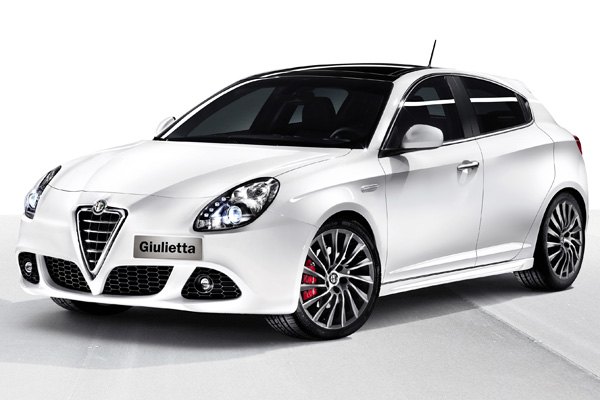

















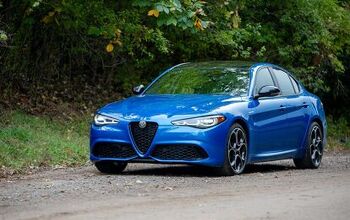
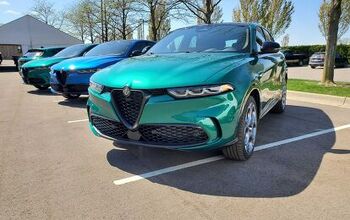
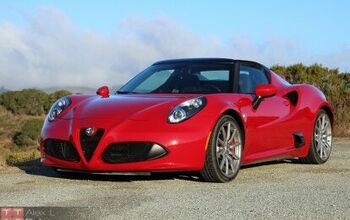

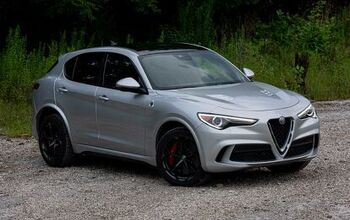










Comments
Join the conversation
I just spent a week in Italy on a bicycle tour and the Giuletta was very common on the roads. I grew to admire their styling including their somewhat retro front end. It was disappointing to read this review although seeing them day after day, I suspected they were no longer a performance vehicle. In fact, most of them (like most of the cars in Italy) seemed to be diesels and it was odd to hear them clatter by. Still, it would be nice to have Alfa back in the US. Their styling is vastly preferable to the Dodge Dart.
Those front end of these Alfas have been turning me off for a while. The last Alfa inverted triangle done right was the 159 and Brera. It worked with the wide headlights, but with the round headlights, looks like Chaplin mustache-y sort of thing.